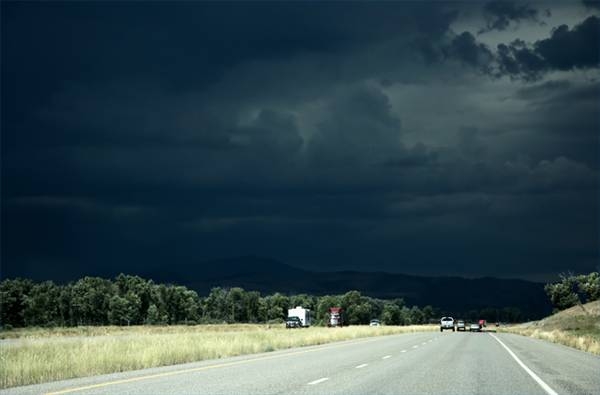
Part of becoming an experienced and skillful driver is learning the most effective methods of driving safely when road conditions are less than ideal. Wind, rain, snow or ice are just a few of the dangers drivers face on a daily basis. Knowing how to navigate successfully when driving conditions are dangerous is important to ensure your safety and the safety of your passengers and fellow drivers. Here are a few tips to help you safely navigate even in the most adverse driving conditions.
Adverse driving conditions include fog, rain, sleet, snow, hail, high wind and extreme heat. Fog can substantially reduce your visibility and make it difficult for others to see you, as well. Light rain can lead to slick road conditions, while heavy rains can cause street flooding. Snow and sleet not only makes the road surface slippery, but it may prevent you from being able to stop when you need to or cause you to lose control of your vehicle altogether. High temperatures can cause engine overheating or contribute to tire blow-outs. Extremely high winds can make controlling your vehicle difficult, cause downed tree limbs or power lines or blow small vehicles into adjacent lanes. When any of these conditions are present, you should use extreme caution.
Slow down as soon as it begins to rain. This is when the oil in the road mixes with the water, creating slippery roadways. Make sure your low beam headlights are turned on and check your brakes occasionally to be sure you have adequate traction to stop in an emergency. Make sure your tires have good tread and are properly inflated, as under-inflated tires can contribute to hydroplaning on wet roadways. If you do begin to loose traction or hydroplane, do not slam on the brakes. Instead, remove your foot from the accelerator and allow your car to coast until you have regained control.
Drive slowly and leave plenty of space between your car and the car ahead of you. Avoid sudden turns or movements and stop slowly by removing your foot from the accelerator and applying gentle pressure to the brake pedal. As much as possible, stay in the center of your lane to avoid driving over patches of "black" or invisible ice on the roadway. Use a defroster to keep your front and rear windshields clear. If you live in an area where it snows frequently, consider purchasing a set of snow tires for added traction, or keep a set of snow chains in your trunk for times when your car may not be able to gain traction without them.
Shift into a lower gear for better traction and stopping power on hills. If you feel your car going into a skid, let up on the accelerator and turn the front wheels into the direction of the skid.

Keep a tight grip on the steering wheel when driving in high winds, as a sudden gust can cause you to lose control of your vehicle or push you into another lane. Anticipate the possibility of falling tree limbs or power lines, and use extra caution when driving under trees and utility poles. If a tail wind is causing your car to go faster, tap the brakes to slow down. If strong crosswinds are pushing your car into another lane, pull over until conditions improve and you can safely continue. Avoid bridges, overpasses and elevated roadways during wind storms, as the winds may be more intense during crossings and could cause you to lose control of the vehicle.
Keep your low beams on when driving in fog. High beams may be reflected off of the fog and cause reduced visibility. Always drive slowly when visibility is low and leave plenty of extra room between your car and the car ahead of you. In extreme fog conditions, you may not be able to see the car in front of you, so keep an eye on your speedometer to make sure that you are not moving too quickly and are able to stop suddenly if you need to. Check your rear view mirror frequently to gauge the distance of the vehicle behind you. You may need to adjust your speed accordingly so that the car behind has plenty of room to stop on short notice. If you find that visibility is so bad that you cannot drive, pull completely off of the road and turn your flashers on so that approaching cars can see you.
Check the gauges on your dash often when the temperatures outside soar. Engine overheating can cause your car to die and may even spark a fire under the hood. If you notice your gauge moving into the red zone, turn off your air conditioner, roll down your windows and turn your heater and the blower to their highest settings. This will reroute some of the heat away from your car's engine. As soon as you have the opportunity, pull into a gas station or mechanic shop to have your engine checked. If you are nowhere near a station, pull your car to the side of the road, turn it off, lift your hood, and wait for at least a half hour before restarting the ignition. If your temperature gauge is still in the red zone, turn the car off again and call a road-assistance company for help. Never leave pets or children inside a parked car in hot weather. The temperature inside the car can be up to 40 degrees higher than outside temperatures, even when the windows are rolled down. Extreme heat can kill or cause irreparable harm to your children and pets.